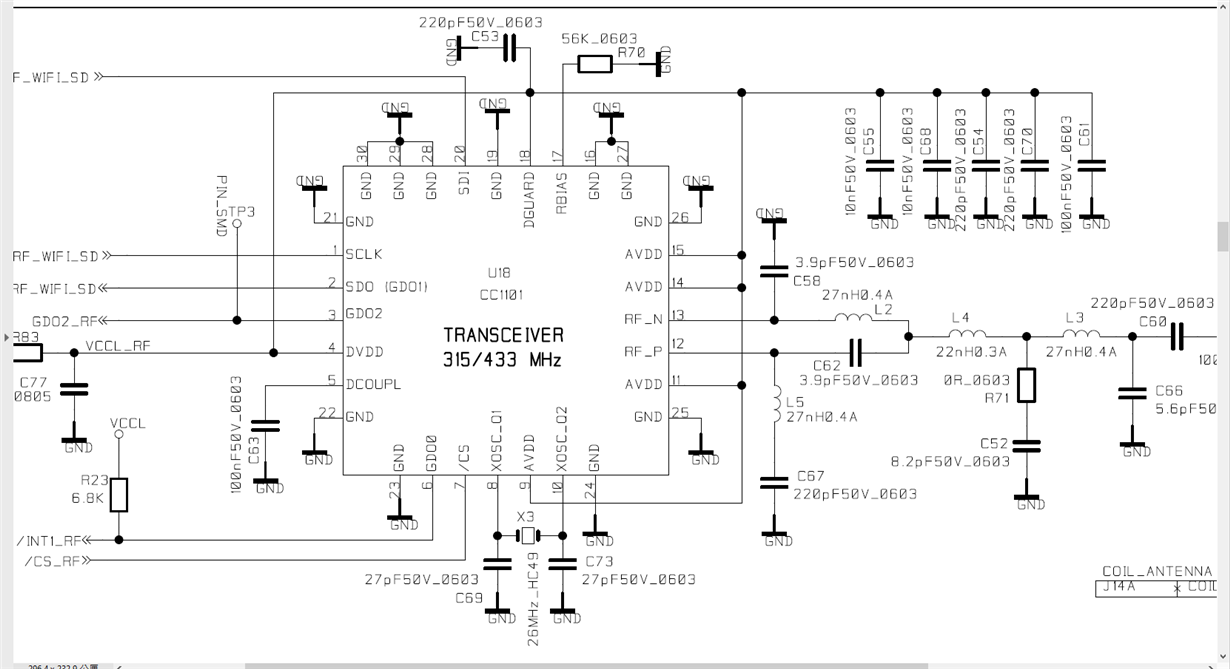Other Parts Discussed in Thread: TEST2
Hi,
My customer is using CC1101 and they use the application and evaluation Circuit for 433 MHz by following the P25/P26 of datasheet.
They plan to get the RSSI of 315MHZ, 433MHZ and 390Mhz.
They found the design can get 315MHz and 433 Mhz, but it can not get the RSSI of 390Mhz.
Please help to check if there is possible to make them can also get the RSSI of 390Mhz.
If it is possible, please help to provide suggestion.
Thanks.


